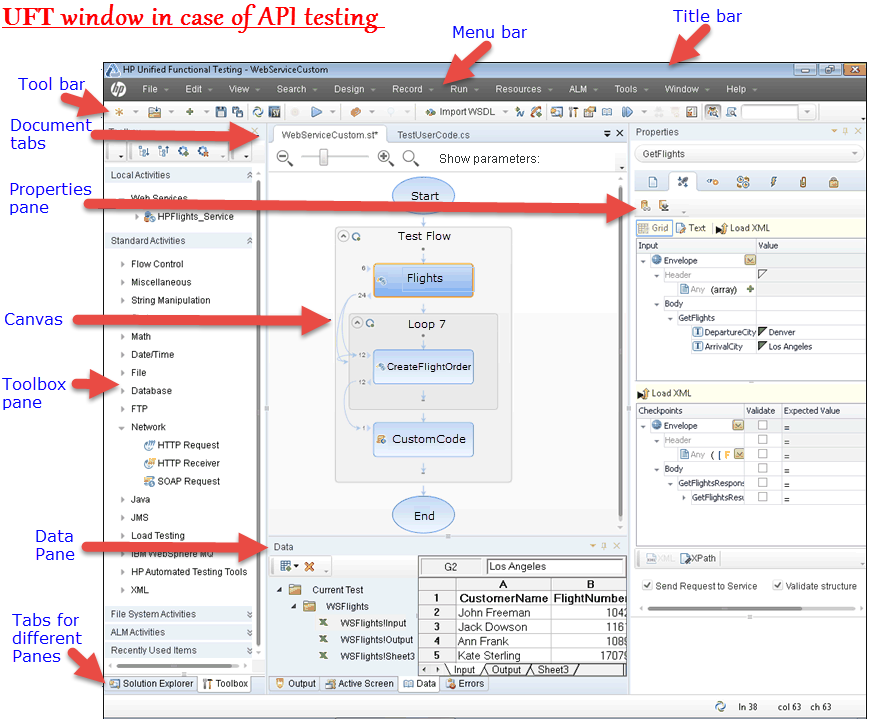
To enhance your test steps, do any of the following: Define data sources for the testįor details, see Assign data to API test/component steps. After creating the action, you can call the action each time you need to repeat these steps in your test instead of adding the activities and setting the activity's properties repeatedly. If you have a number of activities/steps that are repeated often in your test, consider creating an action and adding the steps to this action. For details on the input, output, and checkpoint properties available for each activity, see Standard Activities. If you added a Condition step, drag activities into the condition branches.Įnter the input, output, and checkpoint properties (as needed) for each activity. Indicates a time delay in milliseconds.Īdd activities to the test to create test stepsĮxpand the nodes of the Toolbox pane and drag activities into the Text Flow or a Loop box within the canvas to create test steps. Enables you to define conditional branches. You specify the loop behavior in the loop's input properties.Ĭondition. Enables you to add another loop (the Test Flow loop is always part of a test, and cannot be removed). To build your basic test structure, do the following: Create additional test flow steps- optionalĮxpand the Toolbox pane nodes and drag Flow Control activities onto the canvas: Note: API tests cannot be created in a path containing an "equal sign" ( '=') character. NET Assembly API test step.Īdding any additional reference files that will be referenced by your test.įor details, see Add Reference Dialog Box. NET assemblies referenced by your test.įor details, see Import and create a.

Importing WSDL or WADL files, which define the methods used for a Web service or Web application.įor details, see Import a WSDL-based Web service or Import a Web Application service.Ĭreating REST service resources and methods if your application is based upon REST services.įor details, see Create a REST service model. Import or build the set of resources to be used by your tests, including: For details, see Run Sessions Pane (Options Dialog Box > General Tab).īack to top Prepare the service references (optional) Configuring your run session preferences.Setting up test-specific preferences, including global properties, test input and output properties and parameters, or user profiles and variables.įor details, see Define API test properties or user/system variables. Setting up your global testing preferences. Creating small, modular actions helps make your tests easier to read, follow, and maintain.īack to top Configure UFT One according to your testing needs Plan to create actions in your test for such processes.Īs you plan, try to keep the number of steps that you plan to include in each action to a minimum. Identify any processes that run repeatedly.

What business processes run? What activities are most relevant for the business processes that you want to test?

To do this, you consider the various activities that the application performs. You need to: Determine the functionality you want to test. Before creating a test, you need to analyze your application and determine your testing needs.


 0 kommentar(er)
0 kommentar(er)
